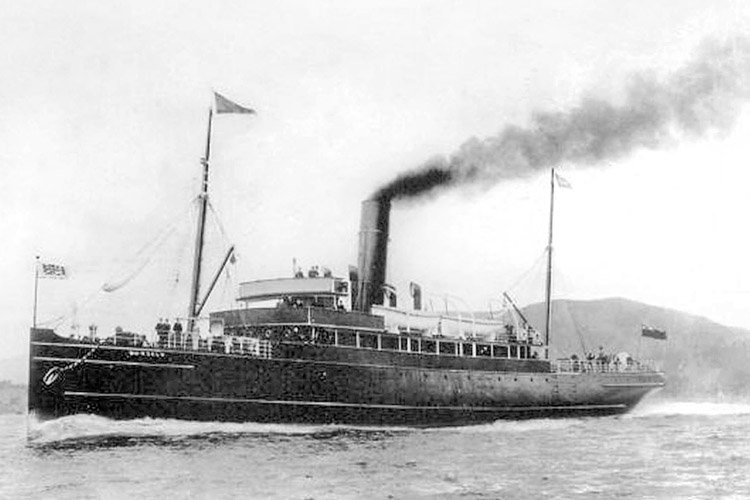Items recovered from the wreckage of the SS Dundalk, a cargo steamer that was sunk by a German u-boat off the coast of the Isle of Man just six weeks before the end of World War 1, are to be presented to the Louth County Museum tomorrow, (July 1st). .
Twenty mariners died in the attack while another dozen managed to get to the life boats and were saved. The items being presented to the Museum tomorrow include the ship’s bell (pictured).
The ship was built in Glasgow in 1899 at a cost of £40,000 as a flagship for the Dundalk and Newry Steam Packet Company. Her main trade was carrying cattle and produce from Dundalk to Liverpool and other goods on the return journey with passengers. Her Captain, Hugh O’Neill from Killowen, Co Down, was a very experienced mariner.
The SS Dundalk had also been attacked the previous year – in December 1917, when 52 shells were fired at her, one of which damaged a life boat which was blown to pieces. No lives were lost on that occasion and the Captain and crew were commended for their bravery.
Louth County Council Museum Curator, Brian Walsh explained that the presentation of the objects will represent a particularly significant and emotional return to their home port.
“These four items – the ship’s bell (pictured below), the hanger on which it hung, a porthole and hand basin – represent perhaps some of the most familiar and intimate pieces which people associate with a ship. Here are the artefactual remains of a ship that was and is so closely entwined with the area’s industrial and cultural history” he said.
The items will be presented to the Museum in accordance with Manx Law by Michelle Haywood from Discover Diving on the Isle of Man. The wreckage site, which is not officially a war grave, was located at a depth of 60 m some three miles off the island’s coast.

Haywood, who dived to the site with colleagues Steve Cowley and Anne Corkill, described the dive as “deep, dark and scary”, adding that “it was technically demanding and well beyond recreational diving limits. She also noted that “every wreck feels eerie, no one built a ship expecting it to end up at the bottom of the sea and there’s a trauma of the war wreck.”
The sinking of the SS Dundalk had a huge impact on the town of Dundalk. The desire to assist those who had lost loves ones saw the formation of the ‘Dundalk Disaster Fund,’ set up on October 22nd 1918 by the Dundalk and Newry Steam Packet Company and Cardinal Logue in Dundalk Town Hall to aid the dependants of the disaster, especially the children. The fund eventually went on to raise significant funds for surviving families.
It is planned that the relics being presented tomorrow will be displayed in the County Museum as part of its permanent exhibition.

Museum Curator Brian Walsh added: “It is impossible to overstate just how important these items are. These artefacts are being returned to the port from which the ship took its name. These items not only represent the horrors of what happened that night and the loss of so many lives, they represent the relief efforts of those people who set about organizing fundraisers to support the families of those who lost loved ones, and remind us of our ancestors, how they survived and thrived through some of our darkest hours.”





